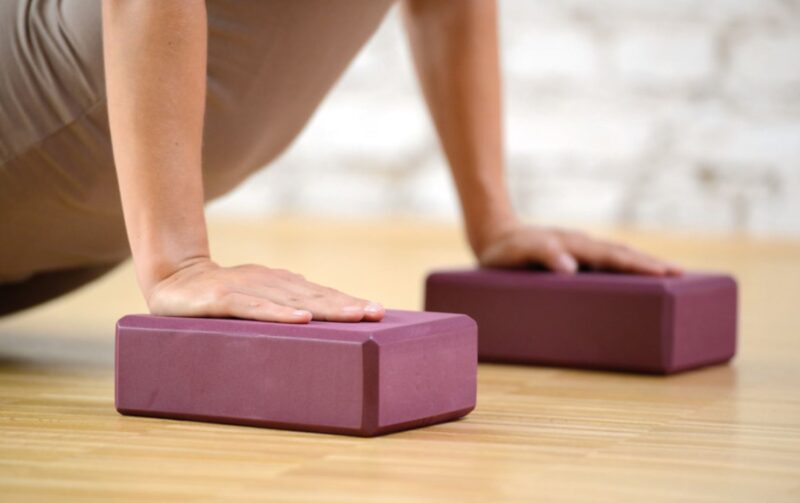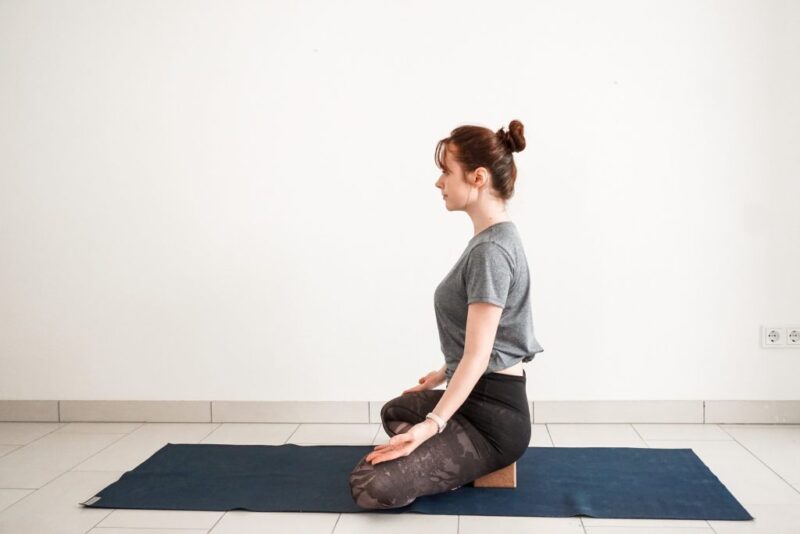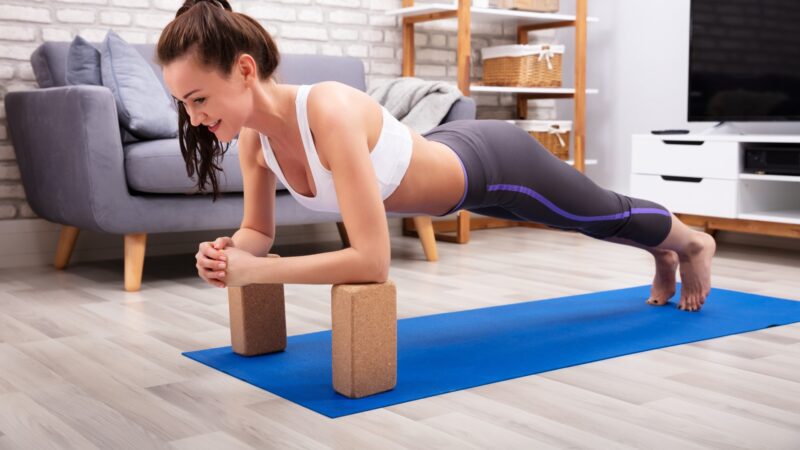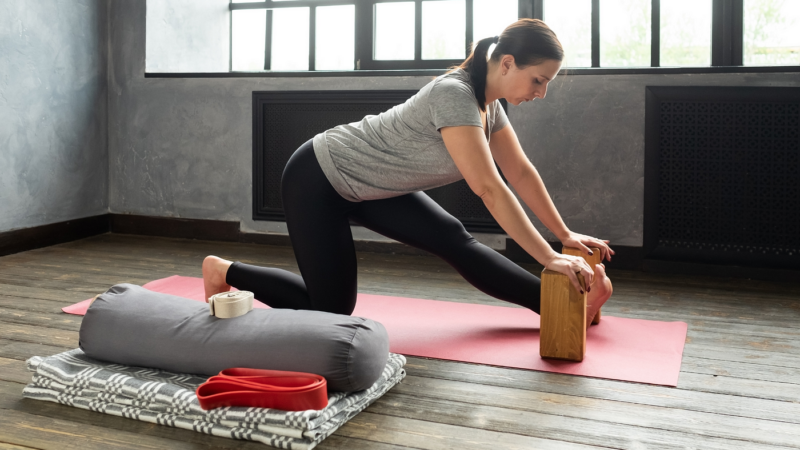Yoga blocks are not just accessories; they are essential tools that enhance the practice by making poses more accessible and safe. They act as extensions of your arms and legs, filling the space between you and the ground, and help in maintaining proper alignment and balance.
This support is crucial for practitioners at all levels, allowing for longer, more comfortable holds in poses and reducing the risk of strain or injury. By enabling a deeper engagement with poses, these blocks encourage exploration and growth within your practice, making challenging positions attainable and enjoyable.
Choosing the Right Yoga Blocks for Your Practice

The journey to finding the perfect yoga blocks for your practice involves considering material, size, and durability. Foam blocks are excellent for beginners due to their lightweight nature and cushioning effect, which is forgiving on the hands and feet.
Cork and wood types offer more stability and support for weight-bearing poses but are heavier and firmer, making them better suited for advanced practitioners. The choice of material affects the block’s grip, weight, and how it feels against your skin, factors that can significantly impact your comfort and performance during practice.
Assessing your needs, such as the types of poses you wish to support and your personal comfort preferences, will guide you in selecting the right ones to enhance your yoga journey. If you’re having issues making the right selection please visit yogadivinity.com for further advice.
Using Yoga Blocks for Stability in Standing Poses
In standing poses, yoga blocks can be transformative, providing the stability needed to maintain balance and alignment. Placing a block under one hand in poses like Triangle or Half Moon can reduce the distance between your hand and the ground, making it easier to focus on opening your chest and aligning your spine without compromising your balance.
This support allows for a fuller expression of the pose, encouraging proper hip, leg, and spine alignment. Additionally, using them in standing poses helps to build confidence and strength, as it teaches the body to engage the correct muscles needed for stability and support.
Enhancing Flexibility with Yoga Blocks in Forward Bends
Forward bends are excellent for stretching the hamstrings and back, but they can be challenging for those with limited flexibility. Yoga blocks can play a crucial role here, acting as a bridge that brings the ground closer to you.
For poses like Paschimottanasana (Seated Forward Bend), placing a block on the soles of your feet can encourage a deeper bend while maintaining a straight back, preventing rounding and promoting a more effective stretch. This method not only enhances flexibility over time but also ensures that you’re performing the stretch safely, minimizing the risk of injury.
Finding Support and Alignment in Seated Poses

Seated poses often require a good deal of flexibility and core strength to maintain proper alignment without strain. A yoga block placed under the sit bones in poses like Sukhasana (Easy Pose) or Virasana (Hero Pose) can elevate the hips, facilitating a more natural spinal alignment and reducing strain on the knees and ankles.
This subtle adjustment allows for a more comfortable and prolonged hold, encouraging relaxation and deeper breathing. The support from the block also helps in cultivating an awareness of proper posture, which is beneficial both on and off the mat.
Deepening Your Practice with Yoga Blocks in Backbends
Backbends are powerful poses that open the chest, shoulders, and front of the body, but they require significant strength and flexibility. Using yoga blocks in backbends like Ustrasana (Camel Pose) or Setu Bandhasana (Bridge Pose) can provide the necessary support to safely deepen the bend.
Placing a block under the hands or feet reduces the distance you need to stretch, making the pose more accessible and allowing for a gradual increase in flexibility. Moreover, they can help maintain alignment and distribute the bend evenly across the spine, preventing overstraining and promoting a healthy backbend practice.
Modifying Poses Safely with Yoga Blocks
Yoga blocks are indispensable for modifying poses to suit individual needs and limitations. They enable practitioners to adjust the height, distance, and angle of poses, making them safer and more comfortable.
For example, in a pose like Balasana (Child’s Pose), placing a block under the forehead can relieve pressure on the neck, while using them under the knees in a lunge can reduce joint strain. These modifications allow individuals to practice at their own pace and level, fostering a more inclusive and personalized yoga experience.
Exploring Balance and Core Engagement with Yoga Blocks

Balance poses challenges and improves our stability, focus, and core strength. Incorporating yoga blocks into balance poses like Vrksasana (Tree Pose) or Garudasana (Eagle Pose) can aid in finding and maintaining balance.
For beginners, placing a block between the thighs in Tree Pose can help engage the core muscles and align the hips, making it easier to stay upright. In more advanced practices, using them can increase the difficulty of a pose, challenging the practitioner to find stability in a new alignment, thereby enhancing core engagement and overall balance.
Improving Alignment and Extension in Arm Balances
Arm balances are a test of strength, focus, and technique. Yoga blocks can elevate your arm balance practice by improving alignment and providing a foundation for extension. In poses like Bakasana (Crow Pose), placing them under the feet before lifting off can give you additional height, making it easier to lean forward and find the balance point.
Blocks can also help in aligning the wrists directly under the shoulders, ensuring a strong and safe foundation. This support not only aids in mastering arm balances but also in exploring variations and transitions with greater confidence and control.
Restorative Practices: Relaxation and Release with Yoga Blocks
Restorative practices with the aid of yoga blocks can significantly enhance relaxation and release in your routine. These blocks act as a foundation, supporting the body in a variety of poses that encourage deep relaxation and stress relief.
By carefully positioning blocks under the back, legs, or arms, you can create a sense of weightlessness and ease, allowing the body to surrender into each pose. This gentle support helps to open up the body slowly and safely, promoting the release of muscle tension and facilitating a deeper connection between mind and body.
Incorporating them into restorative practices not only aids in achieving a greater range of motion but also enhances the overall experience of relaxation, making it more profound and rejuvenating.
Incorporating Yoga Blocks Into Inversions for Stability

Inversions are a cornerstone of yoga practice, known for their numerous benefits, including improved circulation, energy boost, and enhanced focus. However, they can be intimidating for many practitioners. Yoga blocks can play a crucial role in making inversions more accessible and stable.
By using blocks as a foundation, you can gradually build confidence and strength. For instance, placing a block under the shoulders in a headstand can help align the spine and reduce pressure on the neck.
Similarly, for forearm stands, blocks can guide the arms to stay parallel, preventing them from splaying outwards. This not only ensures safety but also helps in cultivating the necessary balance and core strength required for inversions.
Tips for Integrating Yoga Blocks Into Your Home Practice
Integrating yoga blocks into your home practice can transform your experience, making it more enriching and effective. Start by identifying poses where you feel limited or strained and experiment with placing blocks in different positions to find what works best for you.
Remember, the goal is to use blocks to enhance your practice, not to force your body into poses it’s not ready for. Regularly incorporating blocks can help you gradually deepen your practice, improve flexibility, and strengthen muscles with greater alignment and support.
Additionally, be creative and open to exploring new ways to use blocks, such as in restorative poses for relaxation or as weights in certain exercises to increase strength. With consistent use, you’ll find that yoga blocks are not just tools for assistance but essential elements that enrich your practice by making it more accessible, enjoyable, and profound.
Related Posts:
- How Taxi Fares Are Calculated and Tips for Riders -…
- Stress-Free Moving with a Baby: 10 Essential Tips…
- The Role of AI and Machine Learning in Cancer…
- Is Low Communication Between Dates Normal? Tips for…
- How to Prove Personal Injury Claim: Essential Legal…
- When Should You Hire a Commercial Litigation Lawyer? 10 Tips












